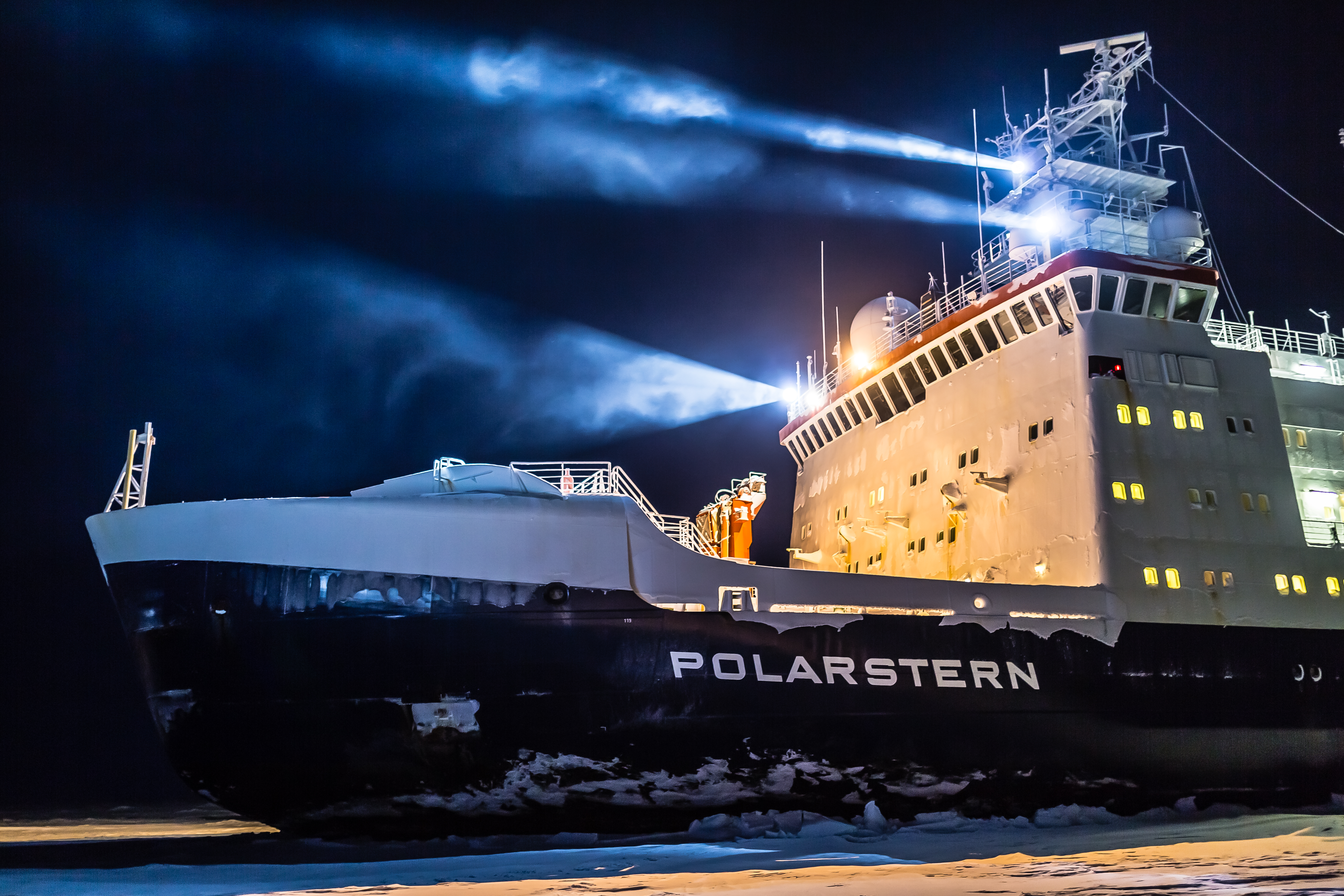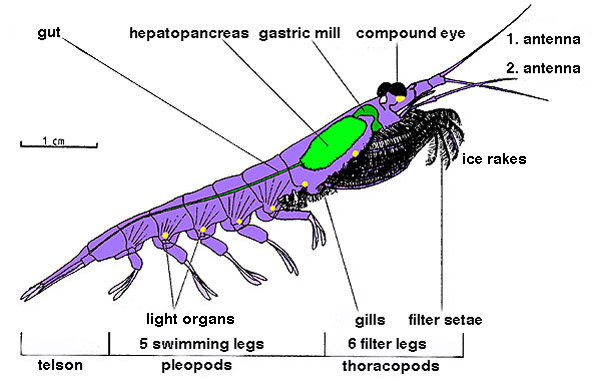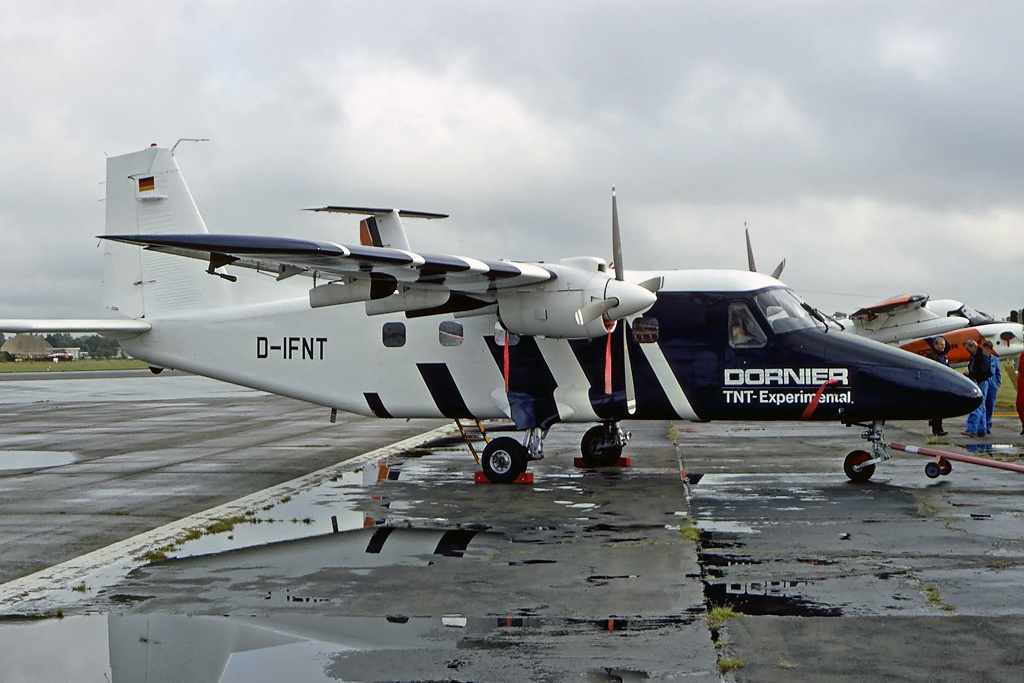|
Alfred Wegener Institute
The Alfred Wegener Institute, Helmholtz Centre for Polar and Marine Research (German: ''Alfred-Wegener-Institut, Helmholtz-Zentrum für Polar- und Meeresforschung'') is located in Bremerhaven, Germany, and a member of the Helmholtz Association of German Research Centres. It conducts research in the Arctic, the Antarctic, and the high and mid latitude oceans. Additional research topics are: North Sea research, marine biological monitoring, and technical marine developments. The institute was founded in 1980 and is named after meteorologist, climatologist, and geologist Alfred Wegener. History The foundation of the AWI happened in a political environment that was characterized by system competition between East and West. The GDR had been conducting its own Antarctic research for decades. In the 1970s it became clear that there would be one scarcity of biological- and mineral resources. Also due to the experience of the oil crisis of 1973, the Federal Republic of Germany decide ... [...More Info...] [...Related Items...] OR: [Wikipedia] [Google] [Baidu] |
Bremerhaven
Bremerhaven (, , Low German: ''Bremerhoben'') is a city at the seaport of the Free Hanseatic City of Bremen, a state of the Federal Republic of Germany. It forms a semi-enclave in the state of Lower Saxony and is located at the mouth of the River Weser on its eastern bank, opposite the town of Nordenham. Though a relatively new city, it has a long history as a trade port and today is one of the most important German ports, playing a role in Germany's trade. History in 1827, but neighboring settlements such as Lehe were in the vicinity as early as the 12th century, and Geestendorf was "mentioned in documents of the ninth century". p. 8. Fourth revised edition. Translated into English from the original German edition titled ''Bremerhaven – tätige Stadt im Noordseewind'' These tiny villages were built on small islands in the swampy estuary. In 1381, the city of Bremen established ''de facto'' rule over the lower Weser stream, including Lehe, later therefore called Bremer ... [...More Info...] [...Related Items...] OR: [Wikipedia] [Google] [Baidu] |
Krill
Krill are small crustaceans of the order Euphausiacea, and are found in all the world's oceans. The name "krill" comes from the Norwegian Norwegian, Norwayan, or Norsk may refer to: *Something of, from, or related to Norway, a country in northwestern Europe * Norwegians, both a nation and an ethnic group native to Norway * Demographics of Norway *The Norwegian language, including ... word ', meaning "small fry of fish", which is also often attributed to species of fish. Krill are considered an important trophic level connection – near the bottom of the food chain. They feed on phytoplankton and (to a lesser extent) zooplankton, yet also are the main source of food for many larger animals. In the Southern Ocean, one species, the Antarctic krill, ''Euphausia superba'', makes up an estimated biomass (ecology), biomass of around 379,000,000 tonnes, making it among the species with the largest total biomass. Over half of this biomass is eaten by whales, Pinniped, seals, pen ... [...More Info...] [...Related Items...] OR: [Wikipedia] [Google] [Baidu] |
West Sahara
West or Occident is one of the four cardinal directions or points of the compass. It is the opposite direction from east and is the direction in which the Sun sets on the Earth. Etymology The word "west" is a Germanic word passed into some Romance languages (''ouest'' in French, ''oest'' in Catalan, ''ovest'' in Italian, ''oeste'' in Spanish and Portuguese). As in other languages, the word formation stems from the fact that west is the direction of the setting sun in the evening: 'west' derives from the Indo-European root ''*wes'' reduced from ''*wes-pero'' 'evening, night', cognate with Ancient Greek ἕσπερος hesperos 'evening; evening star; western' and Latin vesper 'evening; west'. Examples of the same formation in other languages include Latin occidens 'west' from occidō 'to go down, to set' and Hebrew מַעֲרָב maarav 'west' from עֶרֶב erev 'evening'. Navigation To go west using a compass for navigation (in a place where magnetic north is the same dire ... [...More Info...] [...Related Items...] OR: [Wikipedia] [Google] [Baidu] |
Polisario Front
The Polisario Front, Frente Polisario, Frelisario or simply Polisario, from the Spanish abbreviation of (Popular Front for the Liberation of Saguia el-Hamra and Río de Oro), (in ar, rtl=yes, الجبهة الشعبية لتحرير الساقية الحمراء ووادي الذهب, al-Jabhah al-Shaʿbiyah Li-Taḥrīr as-Sāqiyah al-Ḥamrāʾ wa Wādī al-Dhahab), is a rebel Sahrawi nationalist liberation movement claiming Western Sahara. Tracing its origin to a Sahrawi nationalist organization known as the Movement for the Liberation of Saguia el Hamra and Wadi el Dhahab, the Polisario Front was formally constituted in 1973 with the intention of launching an armed struggle against the Spanish occupation which lasted until 1975, when the Spanish decided to allow Mauritania and Morocco to partition and occupy the territory. The Polisario Front waged a war to drive out the two armies. It forced Mauritania to relinquish its claim over Western Sahara in 1979 and continu ... [...More Info...] [...Related Items...] OR: [Wikipedia] [Google] [Baidu] |
Dornier 228
The Dornier 228 is a twin-turboprop STOL utility aircraft, designed and first manufactured by Dornier GmbH (later DASA Dornier, Fairchild-Dornier) from 1981 until 1998. Two hundred and forty-five were built in Oberpfaffenhofen, Germany. In 1983, Hindustan Aeronautics Limited (HAL) bought a production licence and manufactured another 125 aircraft in Kanpur, Uttar Pradesh, India. In July 2017, 63 aircraft were still in airline service. In 2009, RUAG started building a Dornier 228 New Generation in Germany. The fuselage, wings and tail unit are manufactured by Hindustan Aeronautics Limited (HAL) in Kanpur, India, and transported to Oberpfaffenhofen, where RUAG Aviation carries out aircraft final assembly. The Dornier 228NG use same airframe with improved technologies and performances, such as a new five-blade propeller, glass cockpit and longer range. The first delivery was made in September 2010 to a Japanese operator. In 2020, RUAG sold the Dornier 228 program to General Atomi ... [...More Info...] [...Related Items...] OR: [Wikipedia] [Google] [Baidu] |
Polar 3
''Polar 3'' was a Dornier 228 owned and operated by the Alfred Wegener Institute that was shot down south of Dakhla, Western Sahara by guerrillas of the Polisario Front on 24 February 1985. ''Polar 2'' and ''Polar 3'' were the first German airplanes to reach the South Pole when they landed there in December 1984 and were returning from a five-month mission to the Antarctic, having been based at the Gondwana Research Station.Ehemalige Flugzeuge Alfred Wegener Institute – Former airplanes, accessed: 18 April 2009 While in Antarctica, ''Polar 2'' was damaged and the bulk of the survey work had to be carried out by ''Polar 3''. Incident ''Polar 3'' (FL 90) and ''Polar 2'' (FL 110) were two survey-and-research airplanes of the |
RV Polarstern
RV ''Polarstern'' (meaning pole star) is a German research icebreaker of the Alfred Wegener Institute for Polar and Marine Research (AWI) in Bremerhaven, Germany. ''Polarstern'' was built by Howaldtswerke-Deutsche Werft in Kiel and Nobiskrug in Rendsburg, was commissioned in 1982, and is mainly used for research in the Arctic and Antarctica. The ship has a length of 118 metres (387 feet) and is a double-hulled icebreaker. She is operational at temperatures as low as . ''Polarstern'' can break through ice thick at a speed of . Thicker ice of up to can be broken by ramming. History On 7 September 1991, ''Polarstern'', assisted by the Swedish arctic icebreaker , reached the North Pole as the first conventional powered vessels. Both scientific parties and crew took oceanographic and geological samples and had a common tug of war and a football game on an ice floe. In 2001, ''Polarstern'' together with reached the pole again. She returned for a third time on 22 August 2011. This ti ... [...More Info...] [...Related Items...] OR: [Wikipedia] [Google] [Baidu] |
Howaldtswerke-Deutsche Werft
Howaldtswerke-Deutsche Werft (often abbreviated HDW) is a German shipbuilding company, headquartered in Kiel. It is part of the ThyssenKrupp Marine Systems (TKMS) group, owned by ThyssenKrupp. The Howaldtswerke shipyard was founded in Kiel in 1838 and merged with Hamburg-based Deutsche Werft to form Howaldtswerke-Deutsche Werft (HDW) in 1968. The company's shipyard was formerly used by Friedrich Krupp Germaniawerft until the end of World War II. History HDW was founded October 1, 1838 in Kiel by engineer August Howaldt and entrepreneur Johann Schweffel under the name ''Maschinenbauanstalt und Eisengießerei Schweffel & Howaldt'' (Machine Factory and Iron Foundry Schweffel & Howaldt), initially building boilers. The first steam engine for naval purposes was built in 1849 for the Von der Tann, a gunboat for the small navy of Schleswig-Holstein. In 1850, the company built an early submarine, ''Brandtaucher'', designed by Wilhelm Bauer. It had been intended to build the boat ... [...More Info...] [...Related Items...] OR: [Wikipedia] [Google] [Baidu] |
Icebreaker
An icebreaker is a special-purpose ship or boat designed to move and navigate through ice-covered waters, and provide safe waterways for other boats and ships. Although the term usually refers to ice-breaking ships, it may also refer to smaller vessels, such as the icebreaking boats that were once used on the canals of the United Kingdom. For a ship to be considered an icebreaker, it requires three traits most normal ships lack: a strengthened hull, an ice-clearing shape, and the power to push through sea ice. Icebreakers clear paths by pushing straight into frozen-over water or pack ice. The bending strength of sea ice is low enough that the ice breaks usually without noticeable change in the vessel's trim. In cases of very thick ice, an icebreaker can drive its bow onto the ice to break it under the weight of the ship. A buildup of broken ice in front of a ship can slow it down much more than the breaking of the ice itself, so icebreakers have a specially designed hull to ... [...More Info...] [...Related Items...] OR: [Wikipedia] [Google] [Baidu] |
Neumayer-Station II
Neumayer-Station or Neumayer-Station II was a permanent German Antarctic research base on Atka Bay. It opened in 1992, replacing the old Georg-von-Neumayer-Station. On February 20, 2009, it was replaced by the new permanent research base Neumayer-Station III. See also * List of Antarctic research stations * List of Antarctic field camps Many Antarctic research stations support satellite field camps which are, in general, seasonal camps. The type of field camp can vary – some are permanent structures used during the annual Antarctic summer, whereas others are little more than te ... Germany and the Antarctic Princess Astrid Coast Outposts of Queen Maud Land 1992 establishments in Antarctica 2009 disestablishments in Antarctica {{PrincessAstridCoast-geo-stub ... [...More Info...] [...Related Items...] OR: [Wikipedia] [Google] [Baidu] |
Gotthilf Hempel
Gotthilf Hempel (born March 8, 1929) is a retired Germany, German Marine biology, marine biologist and Oceanography, oceanographer. Hempel studied biology and geology at the universities of Mainz and Heidelberg. In 1952 he gained his Ph.D. with a study on the energetics of grasshopper jumps from Heidelberg University. He then went on to work as a scientific assistant at various research institutes in Wilhelmshaven, Helgoland, and Hamburg, where he Habilitation, habilitated with a thesis on the ecology of fry (biology), fry in 1963. Four years later, he became a professor at the University of Kiel at the Institute of Marine Sciences (Institut für Meereskunde Kiel), where he remained director of the Department of Fisheries Biology for the next 14 years and served as Acting Director of the institute from 1972 to 1976. In 1981, he helped found the Alfred Wegener Institute for Polar and Marine Research in Bremerhaven whereupon he became the institution's first director. In the same ... [...More Info...] [...Related Items...] OR: [Wikipedia] [Google] [Baidu] |
Bürgerschaft Of Bremen
The Bremische Bürgerschaft (State Parliament of Bremen, literally “Bremish Citizenry” or “Citizenry of Bremen”) is the legislative branch of the Bremen (state), Free Hanseatic City of Bremen in Germany. The state parliament elects the members of the Senate (executive), exercises oversight of the executive, and passes legislation. It currently consists of 83 members from seven parties. The current majority is a coalition of the Social Democratic Party of Germany, Social Democratic Party, Alliance '90/The Greens and The Left (Germany), The Left (Die Linke), supporting Mayor and Senate president Andreas Bovenschulte. The 68 delegates of the city of Bremen also form the Stadtbürgerschaft (the local parliament of the city), while Bremerhaven has its own local parliament. Current composition After the elections of 2019 Bremen state election, 26 May 2019, the composition of the Bürgerschaft is as follows: Composition (June 2018) After the elections of 2015 Bremen state elect ... [...More Info...] [...Related Items...] OR: [Wikipedia] [Google] [Baidu] |

.jpg)




.jpg)
